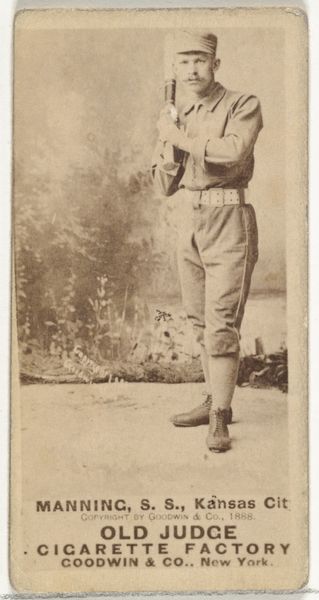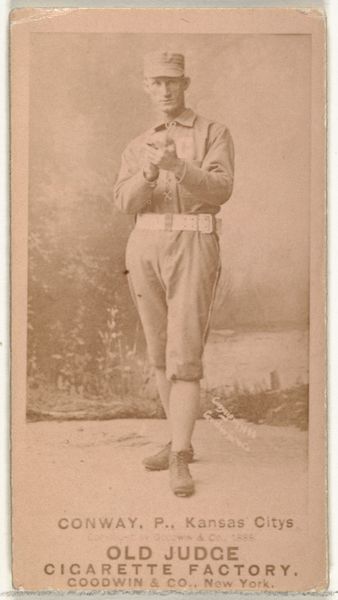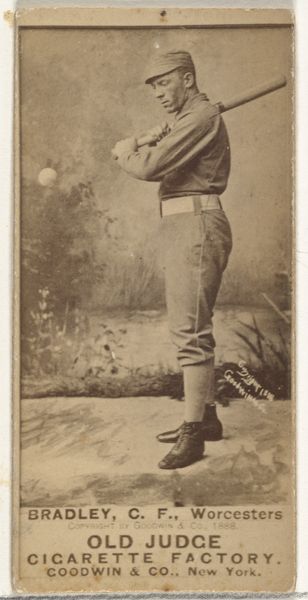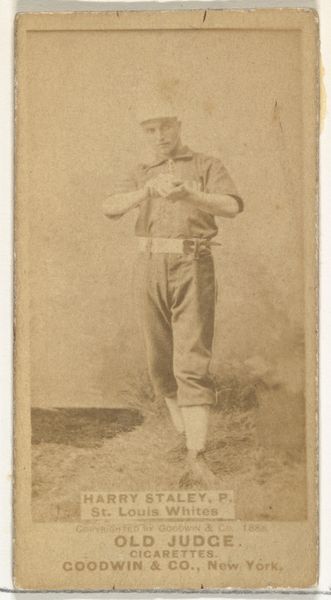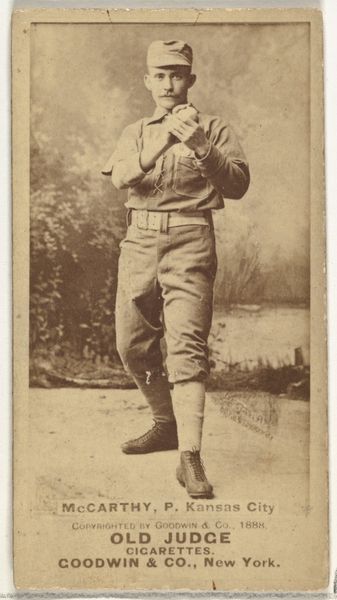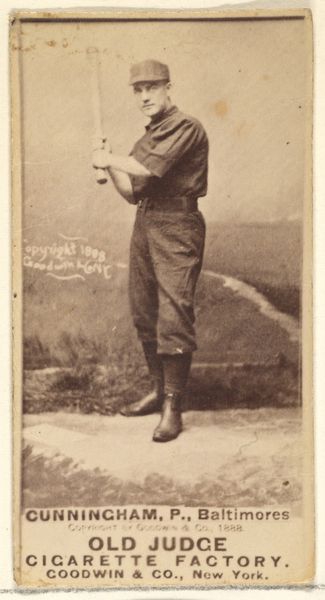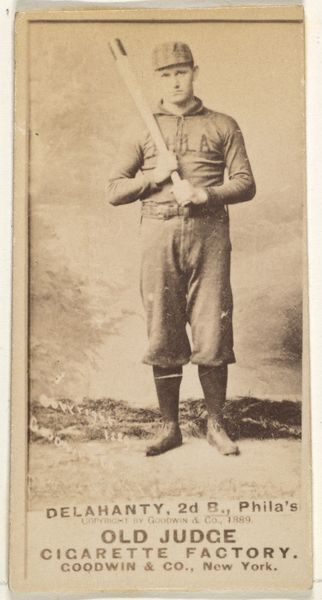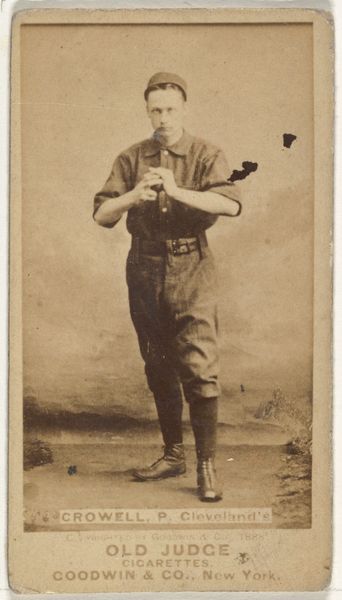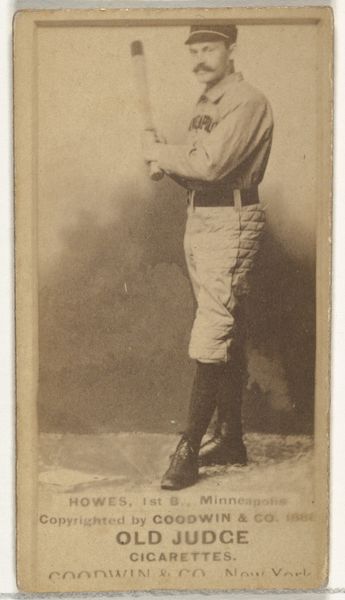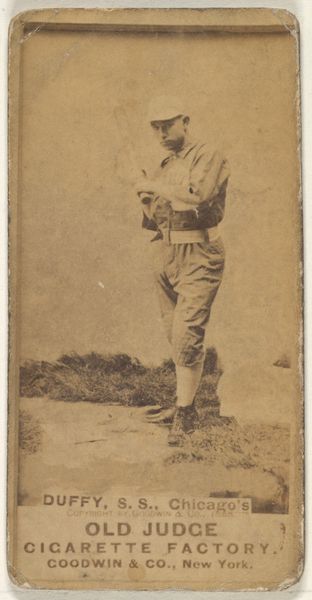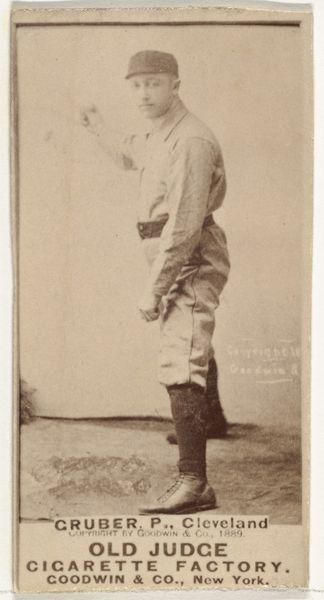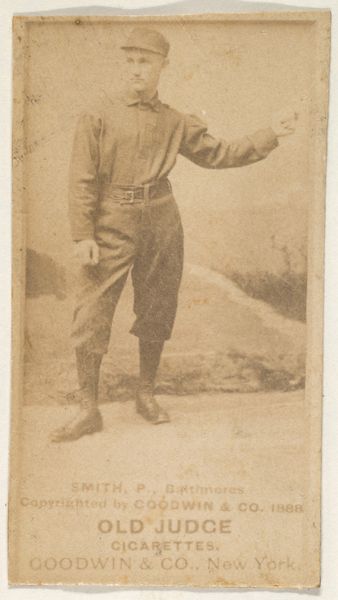
Parke B. Swartzel, Pitcher, Kansas City Cowboys, from the Old Judge series (N172) for Old Judge Cigarettes 1888
0:00
0:00
drawing, print, photography
#
portrait
#
drawing
# print
#
impressionism
#
baseball
#
photography
#
19th century
#
men
#
athlete
#
word imagery
Dimensions: sheet: 2 11/16 x 1 3/8 in. (6.9 x 3.5 cm)
Copyright: Public Domain
Curator: Here we have an interesting object, a baseball card from the Old Judge series, circa 1888, featuring Parke B. Swartzel, a pitcher for the Kansas City Cowboys. It is a photographic print made by Goodwin & Company. Editor: My initial impression is one of a sepia-toned nostalgia. There’s something inherently melancholic about the faded photographic quality, emphasizing the athlete's stiff posture and the staged backdrop. Curator: The card itself functions as a signifier, part of a larger structure of collecting and categorizing. Its format, dimensions, and even the typeface used, speak to its function as a collectible item, designed to be traded and consumed within a particular social system. Editor: Absolutely. It’s crucial to consider the card’s material existence. These cards were distributed with Old Judge Cigarettes, making them a promotional tool tied to the tobacco industry. Think of the laborers involved in producing both the cigarettes and these printed images—the commodification of both baseball and factory work is interwoven here. Curator: Indeed, we can deconstruct the visual elements. The subject, Swartzel, is centered. The blurred background isolates the player and concentrates on the team's lettering and, by association, the "Old Judge" name at the bottom, creating layers of signification in a tight semiotic system. Editor: The materiality of the image—the paper, the printing process, the intended purpose—shaped the composition, I’d argue, not the other way around. Consider the potential exposure to light, moisture, and handling—factors that inherently dictated the image's design for durability, making the artwork's reception part of its original intention. Curator: Perhaps. Though one can appreciate the artist’s, or photographer's, effort to capture the player’s essence within such tight formal and industrial constraints. I read it as an attempt at idealism using real players in a promotional context. Editor: Agreed, but its legacy exists through constant reinterpretation in later consumer culture; even this digital copy challenges our traditional perceptions. It serves less as fine art and more as documentation of shifting historical and economic processes that influence how value is given to objects in our own present moment. Curator: I appreciate your insights. Examining this piece provides, if nothing else, a compelling peek into how sporting figures were presented and disseminated in an earlier era. Editor: And, in essence, it reveals to us the production line linking baseball players to mass media entertainment.
Comments
No comments
Be the first to comment and join the conversation on the ultimate creative platform.
